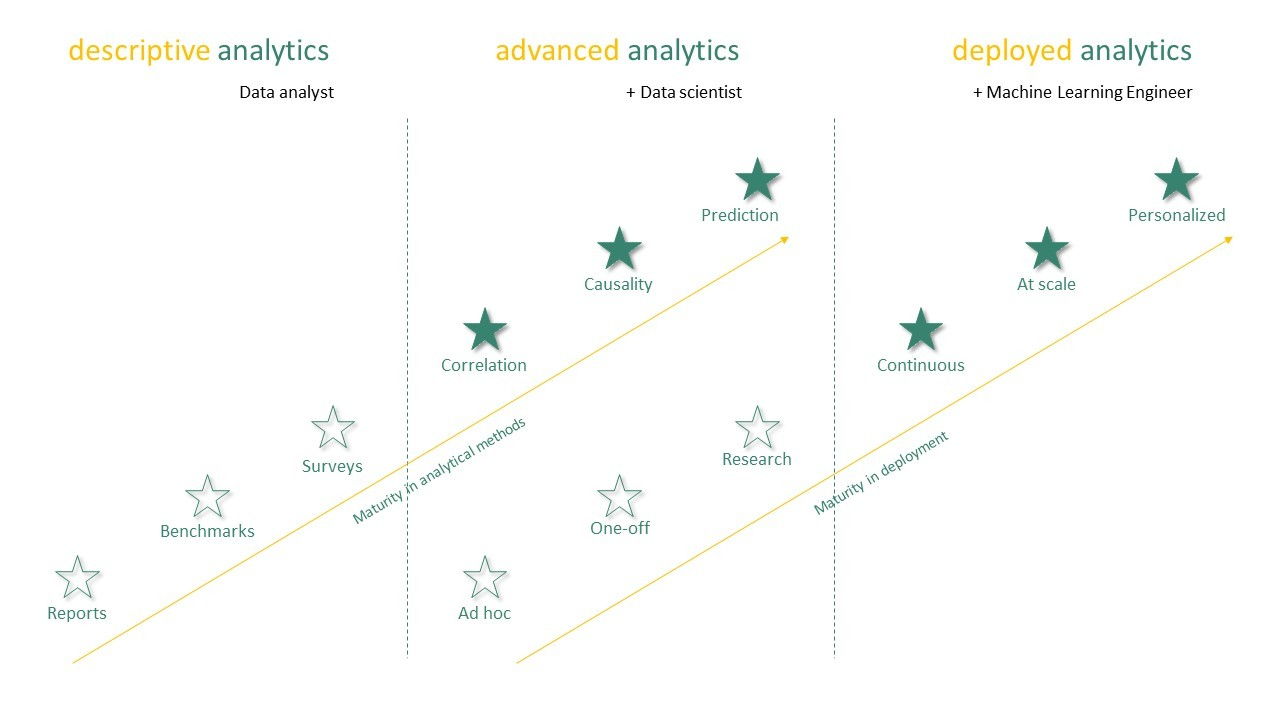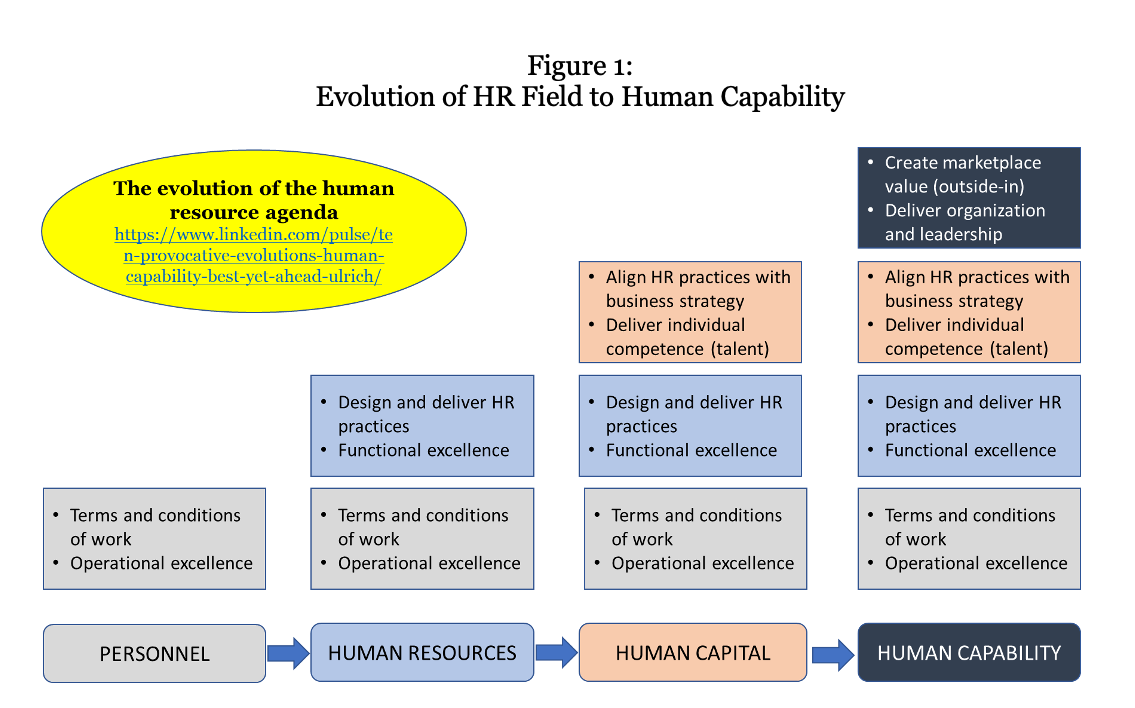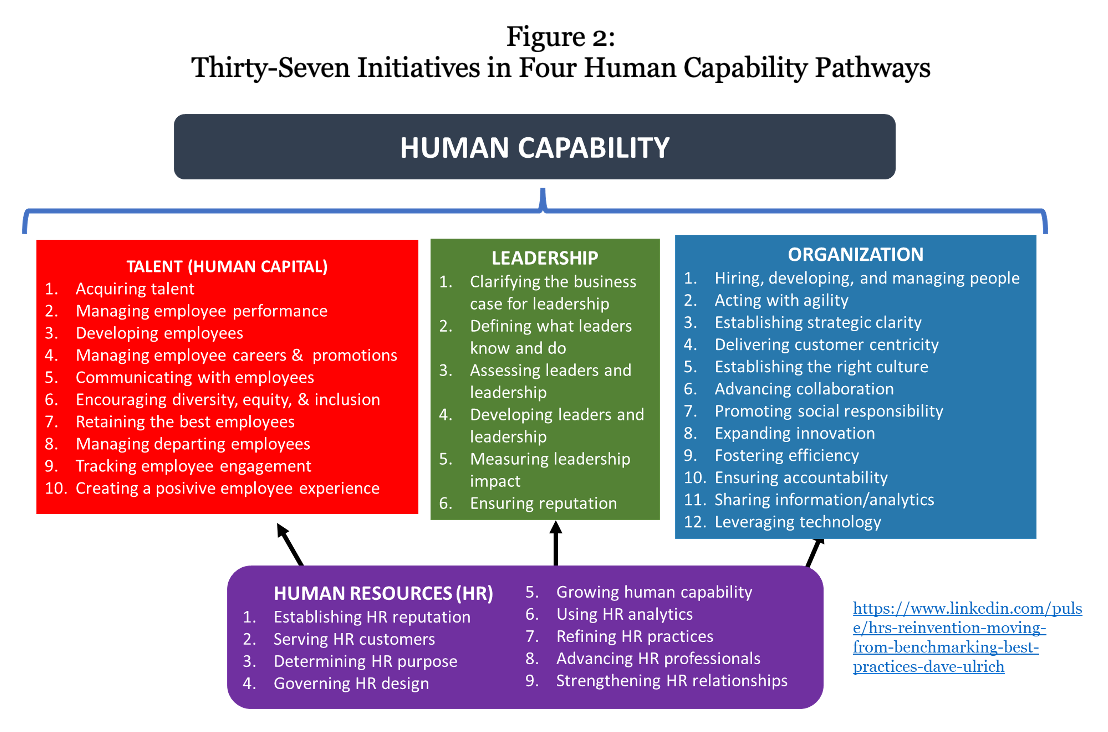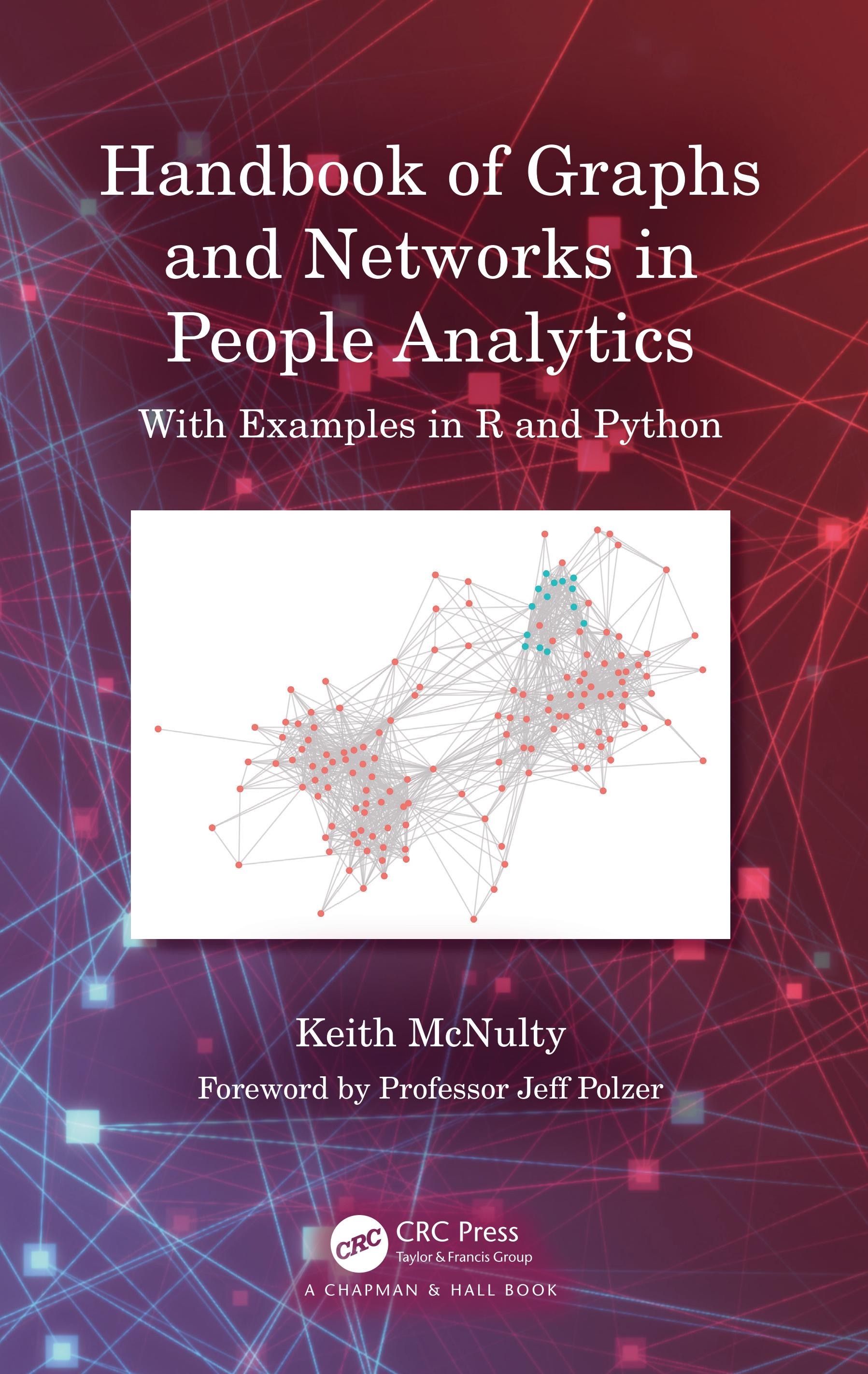2023 People Analytics Trends, Growth Through Human Capability (G3HC), and How Tools Like ChatGPT Could Change Your Business

Leaders need a better understanding of their revenue per employee, the efficiency of the workforce, and cost of labor throughout the business. They need to identify who are their top talents and how to retain them. People analytics can help.
We entered 2023 facing economic uncertainty, inflation, and layoffs. Value and business outcomes are critical, as the time for experiments has passed and now it’s time to bring the value to the table. To help you with this, in current issue I write about 2023 people analytics trends which take into consideration all difficulties we will face this and following years. Then, we look into Human Capability frameworks regarding how to run value adding innovative initiatives in HR. And last but not least, again we deep dive into ChatGPT and OpenAI revolution in the field of generative AI.
In this issue:
- 2023 People Analytics Trends
- Growth Through Human Capability (G3HC)
- How Tools Like ChatGPT Could Change Your Business?
- MS Presentation of AI-powered Bing
- Free E-book
Enjoy!
2023 People Analytics Trends
Orgnostic asked people analytics practitioners about their prediction for 2023. What trends will emerge in 2023 according to experts?
Sidenote. In the past years, let’s say 2018-2022, following forecasts on the people analytics field were very similar. People analytics was emerging in prominence. Additionally, it benefited from the positive economic trends. The growing trend was even more fueled during the pandemic when all of us took part in the experiment of remote work.
This year it changed. Economic uncertainty, inflation, layoffs; they are starting parameter to 2023. Of course, they have affected predictions regarding people analytics too. Below are some predictions. You can find more on the Orgnostic website.
“I think a big trend is going to be understanding productivity – how to measure it and how to act on it in a way that isn’t super ‘big brother’ ish. I know it’s a big topic of discussion for us in a predominantly remote culture. Another one is.. of course…attrition! Predicting it, specifically.” — Hannah Markell-Goldstein, Research & Insights Lead – People Analytics at Dropbox
“A few years ago, I had to learn multiple programming languages and skills just to do ubiquitous tasks like combining two datasets in a warehouse. Now, there are one-click ways to pull from greenhouse or Orgnostic and its peers who let you build in a familiar UI. The needs for overly technical knowledge will shift and the equity of access to HR needs (“I need a database with my HRIS and ATS data combined”) will enhance the work folks can do” — Max Brawer, Director of People Analytics & Tech & Ops at Level
“In a recession, we will see a significant shift in HR Tech. HR Tech that adds value will survive. HR Tech that does not add value will disappear. When companies are focused on weathering the storm, the last thing they want is to buy tech that is nice to have. Similarly, investors are more conservative in allocating their funds to new companies. By the end of 2023, we will see some of the best and most useful HR Tech.” — Konstantin Tskhay, VP of Organizational Effectiveness at Top Hat
“We’re completing one year after the critical time of pandemic. The boundaries between work and home aren’t so easy to define. A big trend (and challenge) for 2023 will be: how can companies predict and anticipate mental health problems? Thinking about a prevention view, how we can keep mental health in good levels and how can we check if our managers are really worried about that? And also, how can we use People Analytics to prevent, predict and or anticipate burnout? I think these two challenges are happening right now, but they will be a trend for 2023, about the active role of HR and managers addressing this problem.” — Albert Liu, HR Business Partner
Orgnostic has also summarized the interviews and shared their conclusions. People analytics function will have to prove it is essential. The team will have to show its relevance to the business strategy execution and how it is contributing to the success of the business. Avoid situation that HR is working for itself. Position HR and people analytics as a profit centre, not a cost centre.
People analytics cannot be slow and cumbersome. To create value, it has to move fast. For this moving past “advanced analytics” to “deployed analytics” is a must in 2023. Patrick Coolen described this in his article Crossing the 2nd Wall of HR.

In current time – well in fact ALWAYS, but in times of DISRUPTION even more than ever – leaders need a better understanding of their revenue per employee, the efficiency of workforce, and cost of labor throughout the business. They need to identify who are their top talents and how to retain them. People analytics can help.
To serve the company in the best way possible, a people analytics team should find effective ways to improve it business acumen. This is related to the expression “doing more with less”. Organizations that will improve their culture, engagement, and productivity will surpass their competitors.
Source: https://orgnostic.com/blog/people-analytics-trends-next-year/
Growth Through Human Capability (G3HC)
The aspiration of HR is to create value for all stakeholders inside and outside the organization. Examples of value for internal stakeholders might be employee fulfilment and strategic realization. Examples of value for external stakeholders might be customer care, investor confidence, and community reputation.
Because of technology, political, demographic, and social contextual changes, about 80 percent of firms’ market value today comes from intangibles (up from 20 percent in the last twenty years)—intangibles representing the ability to adapt to these changes. Further, access to funding, strategic declarations, and digital innovations are less differentiating than the ability to manage people and organization.
HR is more about outcomes of doing HR work and less about HR itself. For example, HR is less about the number of days of training, CEO-to-employee pay ratio, time to hire, workforce policies, or other initiatives and more about the impact on customers, investors, and communities. The company has to succeed on the marketplace first to be a good workplace.
This focus on outcomes more than activities makes people and organization investments more relevant, and even material, to investors, boards, and senior executives. The recent U.S. Securities and Exchange Commission (SEC) requirement to disclose human capital in regulatory reports signifies the increasing interest in people and organization. With little direction about what should be disclosed, about 7,000 U.S. firms reported a host of initiatives and metrics in 2021.
HR has a challenge to counter their quick-fix mentality. That is because its typical increased attention on people and organizations issue many of which do not focus on outcomes. Many HR initiatives, if not supported by research evidence, end as shiny objects and fads.
A response to that challenge is simple but integrated framework for the HR field: Human Capability.
- Human refers to talent (human capital, employee, workforce, people, competence).
- Capability refers to organization (team, workforce, capability).
- Leadership bridges the two.
- HR function refers to the HR department, practices, and people that deliver value.
Human Capability framework supports evolution of the HR profession.

Investors, boards, and business leaders can explore each of the four Human Capability pathways and link them to stakeholder outcomes. HR professionals, as architects, can diagnose performance in each pathway and offer blueprints for progress.
There are four pathways (and 37 initiatives) that result in innumerable innovations. Having a way to integrate these innovative initiatives allows organizations to progress thanks to building on each other rather than isolating initiatives.

These four pathways may be the basis for dialogue and investments related to people and organization.
Most efforts to assess the four pathways and thirty-seven initiatives come from surveys that ask respondents to offer their views on scripted questions. Surveys collect information but have response bias, limited information sourcing, and multi-collinearity findings. For research to lead to actionable insights, we access information with the advance of machine learning, AI, and natural language processing, which takes us beyond traditional surveys.
The researchers were able to run predictive analytics about how Human Capability overall impacted employee, financial, and social reputation outcomes. The data came from 5,700 firms.
The findings were as follows:
- 44 percent of companies reported impact on employee productivity
- 26 percent of companies reported impact on cash flow
- 36 percent and 48 percent of companies reported impact of two social responsibility indicators: fraud and litigiousness
Investors, boards, senior business leaders, and HR professionals who seek higher confidence in employee, financial, and citizenship results should oversee and make informed Human Capability investments.
Governance and Guidance for Growth through Human Capability (G3HC) provides a conceptual and empirical foundation to upgrade and evolve the HR profession by making progress on how Human Capability initiatives deliver value to all stakeholders and by informing SEC disclosures.
How Tools Like ChatGPT Could Change Your Business?
We reached the moment when computers can produce original content in response to queries, drawing from data they have ingested and interactions with the users. They can create blogs, sketch package designs, write computer code, or even theorize on the reason of production error. This is low scale right now, but who knows, maybe a massive revolution is just around the corner.
Generative AI refers to a category of artificial intelligence (AI) algorithms that generate new outputs based on the data they have been trained on. Unlike traditional AI systems that are designed to recognize patterns and make predictions, generative AI creates new content in the form of images, text, audio, and more. - Infographic: Generative AI Explained by AI (visualcapitalist.com)
Generative AI models, to name a few: Stable Diffusion, DALL·E 2, GPT-3; are reaching capabilities we thought are reserved for humans. The current generation of generative AI models are trained on massive, broad, unstructured data sets such as text and images that cover many topics. The power of these capabilities is accessible to all, including developers who lack specialized machine learning skills and people with no technical background. Nevertheless, with all these exciting features this new technology present many ethical and practical challenges.
More than a decade ago, McKinsey wrote an article in which they have sorted economic activity into three buckets: production, transactions, and interactions.
Machines and factory technologies transformed production by automating human labor and additionally amped efficiency thought AI implementation on the manufacturing floor.
Transactions went through many technological iterations including digitalization and automation.
But until recently, interaction labor, such as customer service, has experienced the least mature technological inventions. Generative AI is set to change that. These tools are not intended to work without humans, as in many cases they are most powerful in combination with humans. Generative AI augment human capabilities and enable them to get the work done faster and better. These tools stand to unleash more creativity into the world by prompting humans with starter ideas.
Generative AI is also pushing technology into a realm thought to be unique to the human mind: creativity. The technology leverages its inputs (the data it has ingested and a user prompt) and experiences (interactions with users that help it “learn” new information and what’s correct/incorrect) to generate entirely new content.
McKinsey is listing following first batch of applications of generative AI.
Marketing and sales:
- Write marketing an sales copy including text, images, and videos
- Create product user guidelines
- Analyze customer feedback
- Improve sales force
- Create or improve sales support chatbots
Operations:
- Create or improve customer support chatbots
- Identify production errors, anomalies, and defects
- Streamline customer service
- Identify clauses of interest
IT/engineering:
- Write code and documentation
- Automatically generate or auto-complete data tables
- Generate synthetic data
Risk and legal:
- Draft and review legal documents
- Summarize and highlight changes
- Answer questions from large amounts of legal documents
HR:
- Assist in creating interview questions for candidate assessment
- Provide self-serve HR functions
Utility/employee optimization:
- Optimize communication of employees
- Create business presentations
- Synthesize a summary
- Enable search and question answering
- Automated accounting by sorting and extracting documents
Despite it is tempting to start implement generative AI technology to your processes, we all should proceed with caution. There are plenty of technical and ethical issues that remain open.
- Generative AI can be wrong. For example, ChatGPT sometimes generates inaccurate or wrong information.
- Inappropriate content isn’t filtered good enough. For example, system generated nude photos despite users had input appropriate photos of themselves.
- Systemic biases still needs to be addressed. These systems draw from massive amounts of data that may include unwanted biases.
- Individual norms and values aren’t reflected in the models. Companies will need to adapt the technology to incorporate their culture and values.
- Intellectual-property is questionable. When a generative AI model brings forward a new product design or idea based on a user prompt, who can lay claim to it?
A no-regrets move is to assemble a cross-functional team, including data science practitioners, legal experts, and functional business leaders, to think through basic questions, such as these:
- Where might the technology aid or disrupt our industry and/or our business’s value chain?
- What are our policies and posture? For example, are we watchfully waiting to see how the technology evolves, investing in pilots, or looking to build a new business? Should the posture vary across areas of the business?
- Given the limitations of the models, what are our criteria for selecting use cases to target?
- How do we pursue building an effective ecosystem of partners, communities, and platforms?
- What legal and community standards should these models adhere to so we can maintain trust with our stakeholders?
MS Presentation of AI-powered Bing
On the 31stof January, Microsoft pulled off a demo for reporters at its headquarters. They invested billions in OpenAI, the company behind ChatGPT and now they revealed how they integrated the startup’s latest technology into Bing, one of MS core products.
The new Bing can answer questions people pose in natural language prompts. It can create travel itineraries and it can translate those itineraries into emails that you send your family. It can compile a list that compares prices of products, such as vacuum cleaners. “I think this technology is going to reshape pretty much every software category,” Microsoft Chief Executive Satya Nadella said at the event.
There are still open questions for example how appealing to masses will be this new technology. One thing is sure, MS has attempted to revolutionize search user experience by augmenting it with capabilities of answering questions, chatting, and creating content. This is revolutionary experience. Check the full video from the conference under the link below.
Source: https://www.youtube.com/watch?v=rOeRWRJ16yY
Free E-book Alert!
Handbook of Graphs and Networks in People Analytics by Keith McNulty.

The book’s author describes it this way: “This book aims to make the field of graph and network analysis more approachable to students and professionals by explaining the most important elements of theory and sharing common methodologies using open source programming languages like R and Python. It does so by explaining theory in as much detail as is necessary to support analytical curiosity and interpretation, and by using a wide array of example data sets and code snippets to demonstrate the specific implementation and interpretation of methodologies. Those who start the book will learn about simple but important steps like creating graphs from data sources and visualizing them intuitively. Those who finish the book will learn about important measures like graph density and centrality and useful algorithms for partitioning graphs and identifying communities in complex populations.”
Link: https://ona-book.org/
Inspiring quote
“Micromanagement is a complete waste of everybody’s time. It sucks the life of employees, fosters anxiety and creates a high-stress work environment. Select the right people and give them room to get on with the job.” – Brigette Hyacinth
Want to be a Sponsor?
Would you like to be a sponsor of my newsletter? Contact me: sebastian@szachnowski.com.
Thank you for reading my newsletter! I’ll be delighted to get your feedback about the newsletter and this issue.
Do you know someone who might be interested in this newsletter? Share it with them.
You can also:
- Subscribe to my newsletter https://szachnowski.com/
- Connect with me on LinkedIn https://www.linkedin.com/in/sebastianszachnowski/
- Follow me on Twitter https://twitter.com/sszachnowski
- Send me an email sebastian@szachnowski.com
